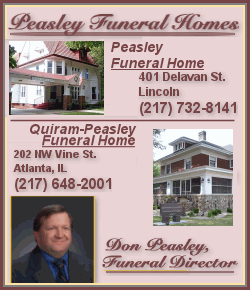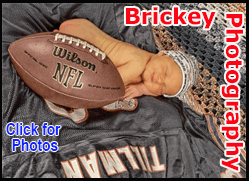|
 When he emerged in August, Grundfest - an influential former
Commissioner at the U.S. Securities and Exchange Commission who now
sits on the board of the private equity firm KKR & Co - had in hand
a 78-page paper larded with more than 400 footnotes. His aim was
nothing less than to destroy securities fraud class action lawsuits
by shareholders, which have been the bane of many businesses in the
U.S. since the Supreme Court endorsed the cases 26 years ago. When he emerged in August, Grundfest - an influential former
Commissioner at the U.S. Securities and Exchange Commission who now
sits on the board of the private equity firm KKR & Co - had in hand
a 78-page paper larded with more than 400 footnotes. His aim was
nothing less than to destroy securities fraud class action lawsuits
by shareholders, which have been the bane of many businesses in the
U.S. since the Supreme Court endorsed the cases 26 years ago.
Grundfest sent the draft around to several other law professors,
including the University of Michigan's Adam Pritchard, another
favorite of pro-business groups. Pritchard read Grundfest's paper
with a sense of familiarity: Five years earlier, in a study for the
Cato Institute, he had pinpointed the same obscure provision of a
1934 securities law as the means to curtail big settlements in
securities fraud class actions. He sent Grundfest an email: "I see
you've put a new twist on things."
The intellectual jousting match between Grundfest and Pritchard is
no longer just academic. Any day now, in the case Halliburton Co v.
Erica P. John Fund, the Supreme Court will decide the future of
securities fraud class actions, litigation that has generated more
than $80 billion in settlements and untold billions more in legal
fees. Grundfest and Pritchard filed competing friend-of-the court
briefs, both supporting Halliburton but advocating different
rationales for curtailing shareholder cases.

The court may, of course, decide to make no change, but if the
justices do rein in securities fraud litigation, it's widely
expected that they will lean on arguments advanced by Pritchard or
Grundfest.
But which one?
BEGINNING WITH "BASIC"
The foundation of securities fraud class actions is a 1988 Supreme
Court decision in the case Basic v. Levinson. It applied to fraud
litigation a then-voguish economic theory, the efficient capital
markets hypothesis, which posits that share prices reflect all
publicly available information. The court said that when a
broadly-traded corporation publicly misrepresents the truth, it
perpetrates a "fraud on the market" - so individual shareholders
need not show that they relied on corporate misstatements.
The Basic ruling led to an explosion of shareholder class actions.
The number of filings tripled between 1988 and 1991, according to
Georgetown University law professor Donald Langevoort, prompting
such an outcry from corporate defendants that Congress rewrote the
rules for shareholder class actions twice in the 1990s. Even after
those reforms, the boom in securities fraud suits continued,
resulting in six of the 10 biggest settlements in class action
history.
Proponents of the cases argue that they return money to deceived
shareholders and provide a necessary private complement to the SEC's
regulatory enforcement. Detractors claim the suits don't actually
benefit shareholders, just their lawyers. For decades, pro-business
groups such as the U.S. Chamber of Commerce have railed against
shareholder class actions, both in Congress and in briefs at the
Supreme Court. But in 25 years of litigation challenges, corporate
defendants managed only to restrain securities fraud class actions,
not to eliminate them.
Basic v. Levinson seemed to be irreversible - until Justice Antonin
Scalia suggested otherwise at oral arguments in November 2012 in
Amgen v. Connecticut Retirement Plans. "Maybe we shouldn't have this
fraud-on-the-market theory," Scalia said. "Maybe we should overrule
Basic."
TWO LINES OF ATTACK
Scalia's comment was apparently prompted by a friend-of-the-court
brief submitted by Pritchard and two other law professors - the only
brief in the Amgen case explicitly to call on the justices to
reverse Basic.
Pritchard has been critiquing the Basic decision since he was a
student editor at the Virginia Law Review in 1991. In his Cato
paper, Pritchard pioneered a theory based on Justice Byron White's
dissent in the Basic case. He focused on the one provision of the
Securities Exchange Act of 1934 (the law governing securities fraud)
that specifically addresses private shareholder suits. That
provision, Section 18, requires investors to prove they relied on
corporate misrepresentations. Pritchard argued that Section 18
severely restricts the damages shareholders can collect in fraud
class actions.

Along with other law professors, Pritchard also questioned the
economic underpinnings of "fraud on the market" doctrine, arguing
that it's based on an overly simplistic view of share prices.
Pritchard, Yale Law School professor Jonathan Macey and University
of Chicago professor Todd Henderson first pitched that argument to
the Supreme Court in a 2011 friend-of-the-court brief. They proposed
that investors should be required to show that corporate
misrepresentations distorted share prices by offering evidence of a
market correction when the truth was revealed. Such "price impact"
studies usually are submitted in the late stage of a case, when
investors show how much they were damaged, but the professors said
trial judges should require them before allowing investors to sue as
a class.
The following year, Pritchard and Henderson filed a similar brief in
the Amgen case, another challenge to a shareholder class action.
When the Supreme Court came out with its Amgen opinion in February
2013, four justices bought in. "Recent evidence suggests that may
rest on a faulty economic premise," wrote Justice Samuel Alito. "In
light of this development, reconsideration of the Basic presumption
may be appropriate."
A SHOT AT HISTORY
Those were the words that sent Grundfest into seclusion last summer,
to put on paper an idea he'd been mulling for several years. The
Supreme Court's invitation to revisit Basic was a chance to make
business history - even if curtailing the cases would cost him the
fees he occasionally earns as an expert for defendants.
Grundfest's thesis went even further than Pritchard's. In broad
terms, his paper argued that Basic can't override the language of
Section 18. Investors, he said, can't recover money damages at all
without showing they relied on corporate misstatements.
In its details, Grundfest's approach offered features to win over
the Supreme Court's conservatives. It was grounded in the text of
the 1934 law, which is the preferred approach of Justices Scalia and
Clarence Thomas. It would allow the court to avoid an economic
debate on the efficient capital markets hypothesis. And its most
subtle advantage was that the Supreme Court wouldn't have to
overturn Basic altogether, which would make it more palatable for a
court traditionalist like Chief Justice John Roberts to support.
Grundfest was itching to test the theory in a live case. He asked
one of the lawyers to whom he'd sent a draft, George Conway of
Wachtell, Lipton, Rosen & Katz, whether Wachtell had any candidates.
Conway, a corporate defense lawyer who has dabbled in conservative
politics, said he'd be on the lookout.
[to top of second column]
|

Less than a month later, the perfect opportunity appeared:
Halliburton petitioned the Supreme Court to review an appeals
court's decision allowing shareholders to proceed with a class
action over decade-old claims that the oil-services giant
underestimated its asbestos liability. Grundfest and Conway, who
volunteered his time, honed the professor's 78-page paper into a
brief urging the Supreme Court to take Halliburton's case.
Grundfest, also working without pay on this project, jumped on the
phone and the computer to rally support for his filing.
"It was a labor of love," said Conway in an email. Added Grundfest:
"Totally pro bono, not a nickel from anywhere." Grundfest
ultimately recruited a dozen other professors and former SEC
officials to sign the brief, which described the 1988 precedent as
"the most powerful engine of civil liability ever established in
American law."
One of the few professors who declined Grundfest's invitation was
Pritchard. He had his own ideas.
RALLYING SUPPORT
Last November, the court voted to hear Halliburton's appeal. The
justices do not announce their votes or reasoning, so it's
impossible to know whether the Grundfest brief influenced their
decision. But it influenced Halliburton. After the justices agreed
to take the case, Halliburton's lawyers at Baker Botts adopted the
Section 18 argument and cited Grundfest's paper in the company's
brief.
Grundfest made a new round of calls to law professors and former SEC
officials to garner support for a brief reiterating support for
Halliburton. In addition, he and Conway urged a friend, a former
lawyer for the Senate Banking Committee, to organize a brief arguing
that Congress didn't mean to endorse Basic when it failed to
overturn the ruling in reforming securities litigation.
Pritchard, meanwhile, revised the brief from the Amgen case to add
his own Section 18 argument, then looked around for co-signers.
Chicago's Henderson said he'd join, even though he'd also signed
Grundfest's filing. No one else agreed to join the brief.

On the other side, a group of 18 law professors banded together in a
friend-of-the-court brief arguing for the status quo. One of them
was Georgetown's Langevoort, who said the Basic decision simply
gives "the person who has been hurt the right to sue." He was
unmoved by the briefs from Grundfest and Pritchard. "Nothing in
defendants' arguments denies that there is substantial harm from
companies' lies," he said.
A GAME OF BINGO
Grundfest and his wife flew to Washington, D.C., for the March 5
oral arguments in the Halliburton case. The night before the
hearing, they had dinner with Conway and a couple of other friends
and speculated about the questions the court would ask.
"We should make Bingo cards!" Grundfest said. Later that night, he
did. On plain white paper labeled "Halliburton Bingo," the squares
included "Section 18(a)," "Justice White," and "Lerach," a reference
to the former plaintiffs lawyer Bill Lerach, who was convicted of
criminal conspiracy for his role in a kickback scheme, and whose
tactics prompted Congress to reform private securities litigation.
Grundfest also included himself and Pritchard — in separate squares.
The next morning, he handed the Bingo cards out to friends.
Pritchard skipped the arguments and took his kids to Disney World.
COMPROMISE SOLUTION
Halliburton lawyer Aaron Streett led off the company's argument with
an oblique reference to Section 18. But then, several minutes into
his presentation, the argument took a turn. Justice Anthony Kennedy
asked, "Would you address briefly the position taken by the law
professors, I call it the midway position, that says there should be
an event study?"
Justice Kennedy and other justices kept coming back to "the law
professors' position," meaning Pritchard and Henderson, not
Grundfest. The price impact argument had stolen the court's
attention.
David Boies, who represented the shareholders suing Halliburton,
emphasized that price impact studies are complex, expensive and
time-consuming. But a lawyer for the government, which argued in
support of the shareholders, conceded that the consequence of
requiring such studies would not be dramatic.
The buzz outside of the courtroom after oral argument was all about
the brief that had inspired so much interest from the justices. A
cluster of shareholder lawyers standing in the Supreme Court lobby
expressed relief that the justices seemed inclined to compromise
instead of erasing their business. None would talk on the record,
but one plaintiffs lawyer said that if the Halliburton decision
ended up requiring shareholders to show market impact, "We can live
with that."

After the argument, Grundfest called Pritchard. "He said, 'good for
you,'" Pritchard said.
Weeks later, as he waited for the Supreme Court's opinion, Pritchard
declined to hazard a guess about the outcome, predicting only that
Chief Justice Roberts will be the swing vote. Grundfest, meanwhile,
was still hoping his ideas will influence the court. He said he
could envision a three-way split in which the three most liberal
justices ruled to leave Basic untouched, the three most conservative
voted to overturn it and the three in the middle opted to leave
Basic intact and add a price-impact test. That would mean a victory
for Pritchard and corporate defendants—even if it's not all that
Grundfest, Halliburton and the broader business lobby had hoped for.
"It's 50-50-50," Grundfest said.
(Reporting By Alison Frankel; Editing by Amy Stevens, Martin Howell)
[© 2014 Thomson Reuters. All rights
reserved.] Copyright 2014 Reuters. All rights reserved. This material may not be published,
broadcast, rewritten or redistributed. |